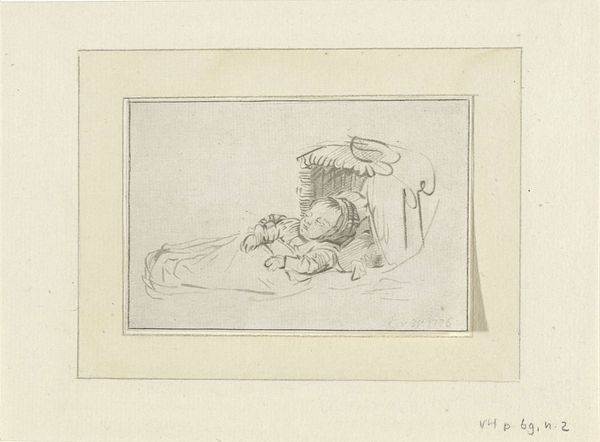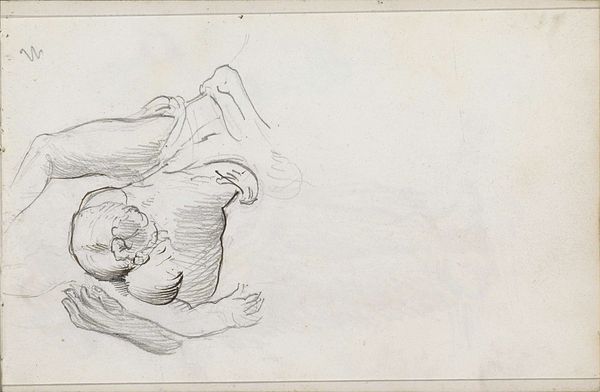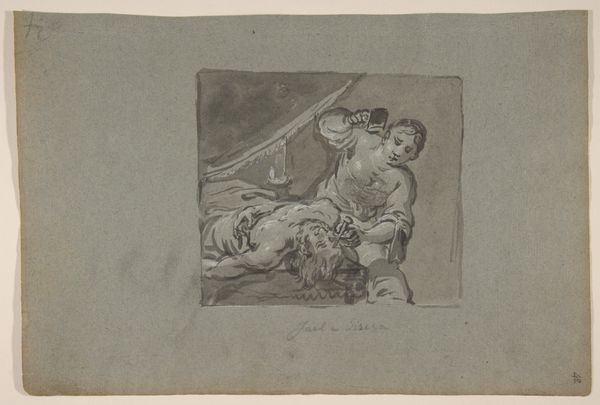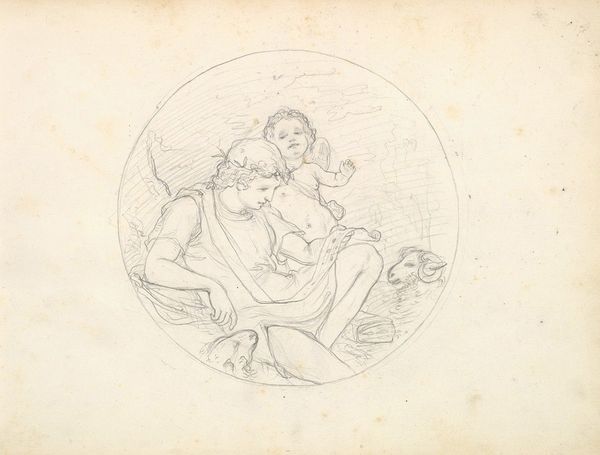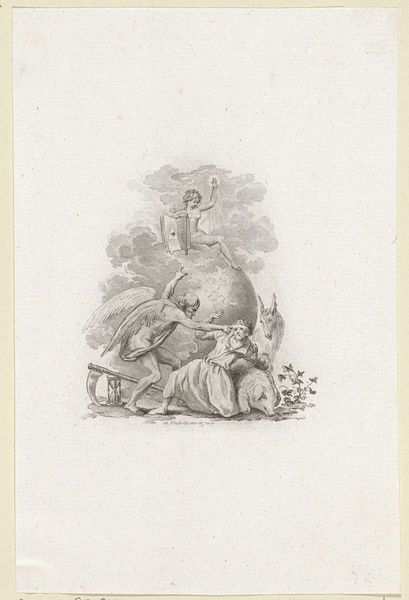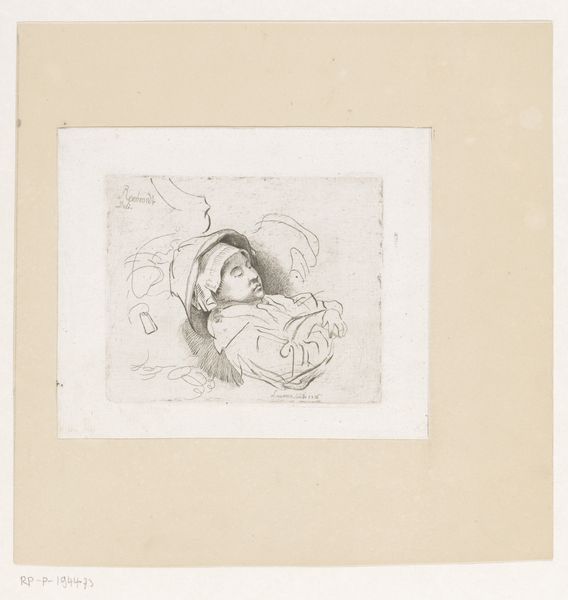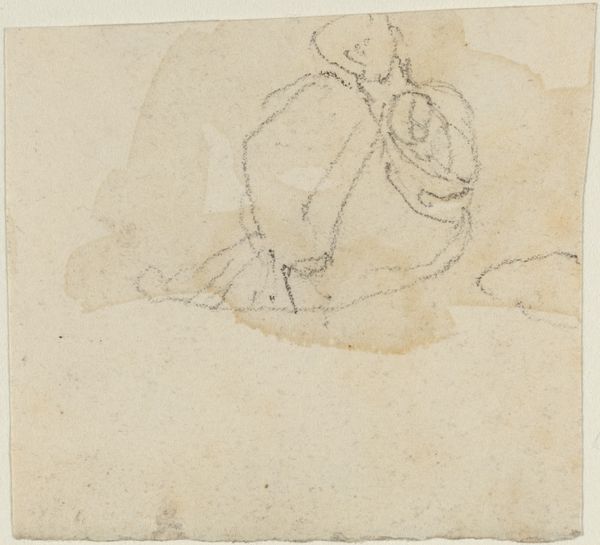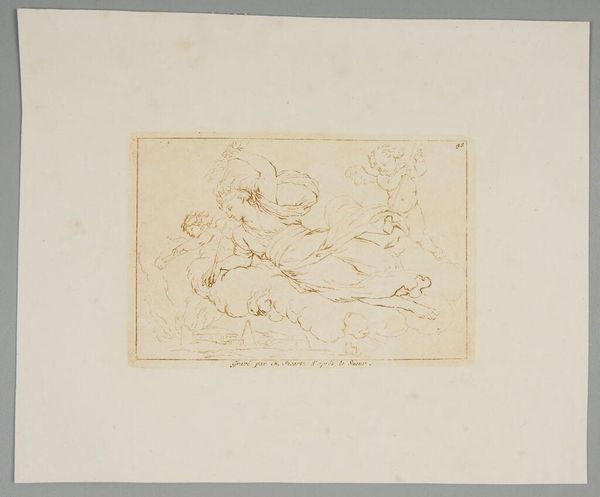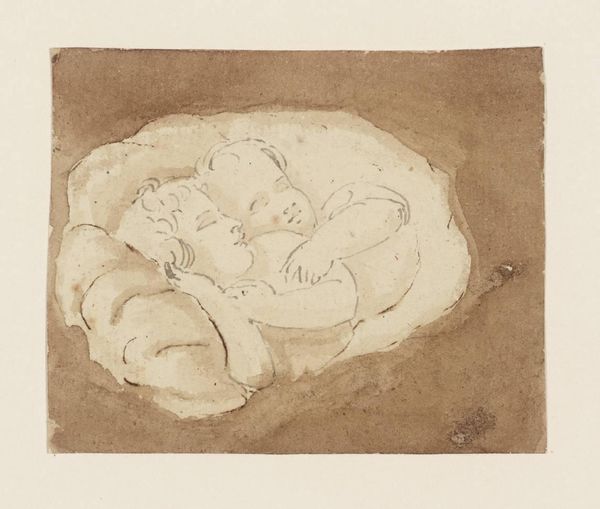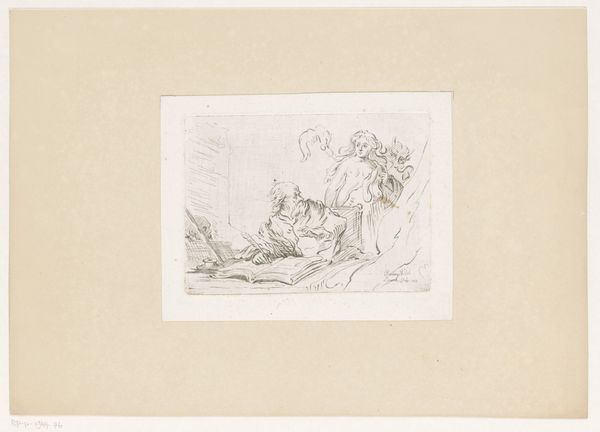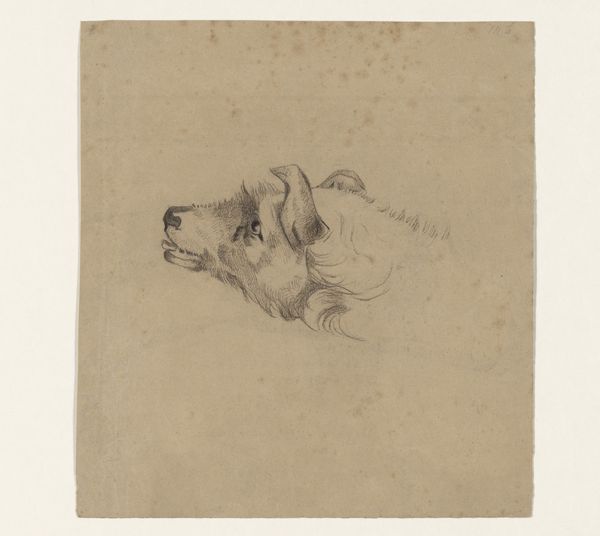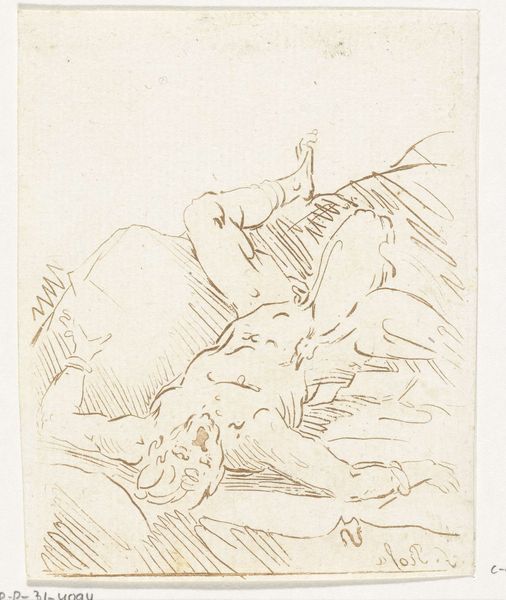
drawing, pencil
#
drawing
#
neoclacissism
#
pencil sketch
#
pencil
#
genre-painting
Dimensions: height 112 mm, width 154 mm
Copyright: Rijks Museum: Open Domain
Curator: Let's discuss "Sleeping Child in a Cradle," a drawing by Elisabeth van Woensel, dating back to 1776. It's rendered in pencil. Editor: The first word that comes to mind is fragility. The light pencil strokes almost mimic the delicacy of a newborn’s features. It's also a study of stillness. Curator: Yes, stillness is key. Van Woensel's technique utilizes the subtle gradations of the pencil to define form and texture. Note how the artist uses hatching and cross-hatching to create volume, particularly in the wicker of the cradle. There’s a fascinating interplay between defined and undefined lines which brings a quiet complexity to the composition. Editor: Looking at this, I am struck by what this represents: The presumed innocence of childhood but, given it was 1776, also the vulnerability of children from wealthy Dutch families during a time when political power was incredibly centralized, wealth was unevenly distributed and the infant mortality rates were so high. Genre paintings often idealize this era. Does it serve as pure sentiment or silent political critique? Curator: It's hard to determine that as Van Woensel had connections with the Elzeviers. If you consider the composition alone, there’s an interesting contrast between the soft curves of the baby and the geometric rigidity of the cradle's form and the boundary. It seems almost… contained. Editor: Perhaps that containment also alludes to the limitations placed upon women artists of her time? Even genre-based art offered avenues for personal, social and political introspection and discourse for women like Woensel. Or, conversely, we should address how the painting also reinforces the patriarchal and marital imperative to reproduce—especially legitimate heirs for elite society? Curator: That’s a valid consideration. Ultimately, regardless of intentions, Van Woensel's drawing serves as a reminder of our own interpretations. The linear precision certainly compels us to decipher layers of meaning. Editor: Absolutely. It highlights the crucial and ongoing dialogue between art's aesthetic form and its ever-evolving social narratives, revealing just how rich even the simplest domestic sketch can be.
Comments
No comments
Be the first to comment and join the conversation on the ultimate creative platform.
